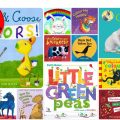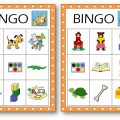Author: Lucy Cousins
Illustrator: Lucy Cousins
Publisher: Walker Books
Year: 2010
Language: English
Type of resource: Illustrated picture book
Themes: School life, routines, friendship, early learning
Age range: 3 to 7 years old
School levels: Preschool (Nursery, Pre-K, Kindergarten) to Grade 1
Main learning objective: To introduce vocabulary and daily activities related to preschool.
Main language objective: I can name activities and objects from preschool.
Summary of the Book
Today is a very good day for Maisy because she’s going to preschool. She meets her friends Dotty, Cyril, and Tallulah. From arrival to departure, the characters take part in a variety of activities: painting, story time, playing, napping, and outdoor fun. The book follows a simple chronological structure, presenting key moments of a typical school day. This reassuring story helps young learners understand the flow of the day and learn English vocabulary connected to preschool life.
Culture and Vocabulary
The story immerses readers in a typical day at a British-style preschool. Many familiar features echo those in French or European preschools—personalized coat pegs, reading corners, nap time—making it easier to build intercultural understanding. The educational values highlighted include autonomy, cooperation, and respect for classroom routines.
School vocabulary: preschool, peg, painting, wall, book time, story, blanket, nap, garden, toilet, sandpit, toy car, seesaw
Routines vocabulary: hang your coat, wash your hands, gather round, snuggle down, play the drums, listen quietly
Objects vocabulary: coat, blanket, guitar, drum, toy car, fruit, muffin, paint
Actions vocabulary: hang, paint, eat, wash, snuggle, sing, dig, drive, dance
Time-of-day vocabulary: little lunch, story time, quiet time, noisy time
Food-related vocabulary: little lunch, drinks, muffins, fruit, yummy, scrummy
Idiomatic expressions: Oh, yummy, scrummy! / Thank you very, very, very much! / What a very good day!
Grammar and Structures
- Simple Present Tense: “Maisy goes to preschool.” – The main tense used throughout, ideal for describing daily routines.
- Past Simple Introduction: “Because she went to preschool.” – Introduces the simple past with a familiar verb.
- Imperatives: “Gather round, everybody.” – Useful structure for classroom instructions.
- Exclamatory Sentences: “What a very good day!”, “What brilliant paintings!” – Easy and expressive pattern with “What a…” to convey strong emotions.
- Simple Dialogue: “Hello, Dotty.” / “Hello, Maisy.” – Great for role-play and oral interaction.
- Contracted Forms: “That’s my new house.” – Introduces students to common contractions used in speech.
- Time Expressions: today, first, then, until – Helps structure storytelling and sequencing.
- Possessive Pronouns: “Maisy hung her coat.” – Basic introduction to possession using “her”.
Phonology
- Short, rhythmic sentences: Supports read-aloud sessions and memorization
- Rhythm and intonation: Especially with exclamatory sentences like “What a very good day!”
- Sounds [s] and [z]: Maisy, music, noisy, plays, seesaw, goes, preschool – Great for practicing sibilants
- Sound repetition: “very, very, very much”, “yummy, scrummy” – Reinforces expressive intonation and musicality
- Sound contrast and expressive tone: “Goodbye Dotty. Goodbye Maisy. Goodbye Mr Peacock.” – Perfect for working on greetings and name intonation
Teaching Suggestions
Before Reading
- Show the cover and ask students to identify Maisy and guess what school activities they’ll see
- Talk about school routines and ask learners to share theirs
- Use real objects or flashcards to introduce school-related vocabulary
During Reading
- Mime actions along with the story (snuggle down, hang your coat…)
- Ask simple questions: What is Maisy doing? Who is this?
- Identify characters as the story progresses
After Reading
- Rebuild Maisy’s school day in chronological order with picture cards
- Create a picture dictionary of preschool activities in English
- Play “Simon Says” using verbs from the story
- Mini-grammar lesson : Use the present tense to describe students’ own routines: “I paint, I play, I eat…”
Cross-Curricular Connections
Song: “I Can Follow the Rules” – Reinforces class expectations through music.
Civic Education: Discuss rules and respectful behaviors at school.
Art: Paint the classroom or characters using Lucy Cousins’ colorful illustration style.
Music: Use classroom instruments like Maisy and friends to explore rhythm.
Media & Information Literacy: Compare images of schools around the world with Maisy’s preschool
Project Ideas
Class Project: My Ideal Preschool Day
Objective: Imagine and illustrate an ideal school day with favorite activities. Each child creates one illustrated scene with a short English caption: “I paint”, “I play”, etc. Display as a collaborative class book or wall poster.
Follow-up Readings:
Read Maisy Learns to Swim or Maisy Goes to the Library (Amazon Affiliate Links) to expand vocabulary on daily life topics. Read Spot Goes to School and compare with a new character and school setting.
Conclusion
Maisy Goes to Preschool is an excellent resource for introducing young learners to English vocabulary linked to their school environment. Its simple structure, engaging illustrations, and accessible language make it a highly adaptable tool for preschool and early primary classrooms. It supports vocabulary acquisition, daily routines, and social interactions in English through repetition, play, and storytelling.





